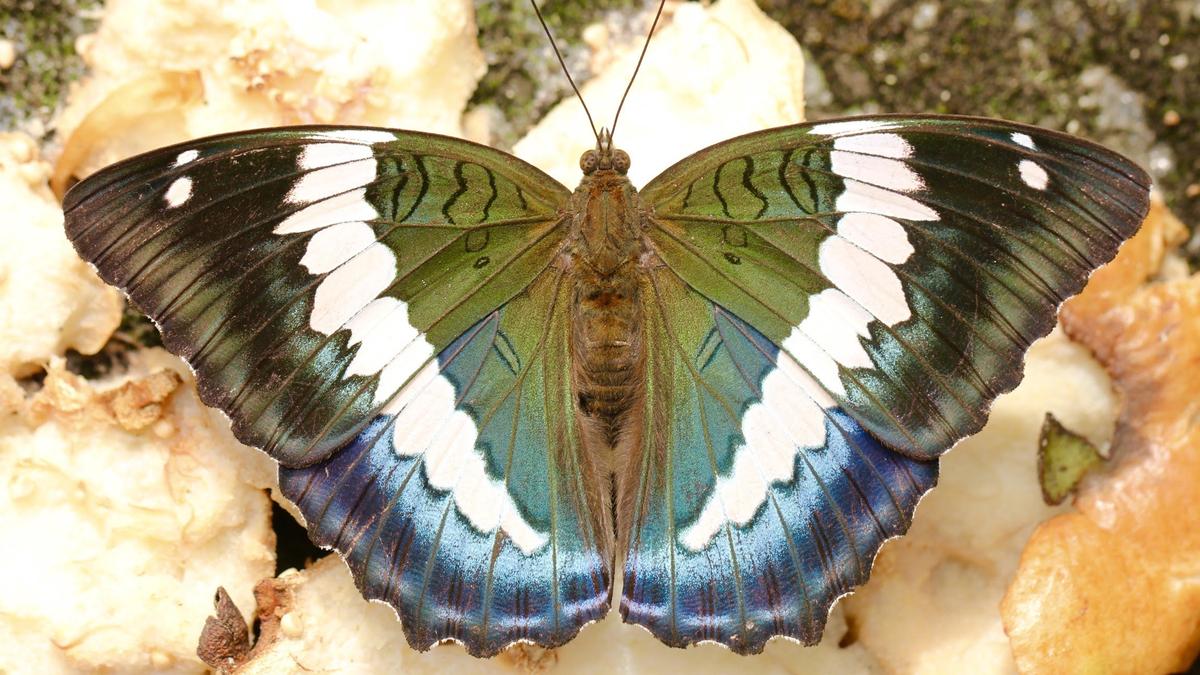Bassarona durga (Sikkim’s State butterfly)
| Photo Credit: Special Arrangement
A 10-year study to establish the Dzongu region as one of India’s richest butterfly habitats has become a “gift to the world” in celebration of Sikkim’s 50 years of Statehood.
Sikkim transitioned from a protectorate to India’s 22nd State on May 16, 1975.
Sonam Wangchuk Lepcha, a citizen scientist from Noom Panang village in Sikkim’s Mangan district, trekked through forests, climbed hills, crossed rivers, and spent days and nights under the open sky between 2016 and 2024 to record 420 species of butterflies in Dzongu. This worked out to 60.95% of about 700 species recorded in Sikkim so far.
He published the findings with zoologist Monish Kumar Thapa of the Assam Royal Global University in the latest issue of the Journal of Threatened Taxa.
“Sikkim is known as a global hotspot for butterflies according to the Government of India, but what fills me with more pride is that almost 61% of all the butterflies found in the State are from Dzongu, our home, rich in forests, culture, and traditions,” Mr. Lepcha told The Hindu.
Measuring about 78 sq. km, the triangular Dzongu region is at an elevation ranging from 700 metres to 6,000 metres above the mean sea level. The area adjoins the Khangchendzonga National Park and Biosphere Reserve and is a part of the Indo-Myanmar Biodiversity Hotspot.
Butterflies are considered a valuable indicator of biodiversity because their populations are sensitive to environmental changes and habitat loss. India is home to 1,502 of some 20,000 butterfly species recorded across the globe, and a tad less than 50% of the species found in the country thrive in Sikkim.
According to the Lepcha-Thapa paper, Nymphalidae emerged as the dominant family with 165 species across 68 genera, followed by Lycaenidae with 92 species from 51 genera, Hesperiidae with 84 species from 44 genera, Papilionidae with 38 species from eight genera, Pieridae with 32 species from 13 genera, and Riodinidae with nine species from three genera.
Altogether 118 of these species recorded in Dzongu are protected under the Wildlife (Protection) Amendment Act, 2022 with the majority warranting a high level of protection as Schedule II insects. A total of 194 butterfly species exclusive to the northeastern region have been documented.
Among the rare butterflies recorded were Papilio krishna, Teinopalpus imperialis, Meandrusa lachinus, Stichophthalma camadeva, Euaspa pavo, Ionolyce helicon, Dodona adonira, Koruthaialos butleri, Bassarona durga (Sikkim’s State butterfly), and the Zographetus dzonguensis. that’s still new to science.
“We found that the sub-tropical hill forest supported the highest butterfly diversity with 395 species recorded, while the sub-alpine forest supported the lowest diversity with 13 species,” Mr. Lepcha said, thanking guides Nosang M. Limboo and Sonam Pintso Sherpa, and members of the Butterfly Society of Sikkim for helping with the decade-long study.
Published – May 04, 2025 06:37 pm IST
